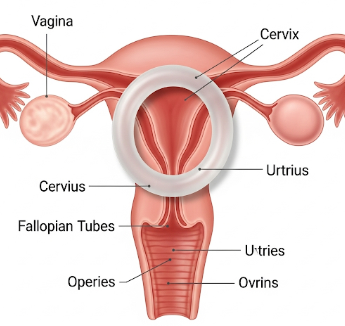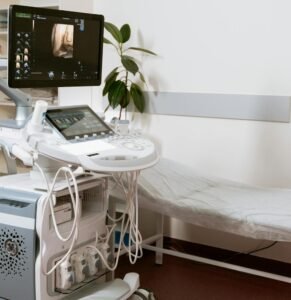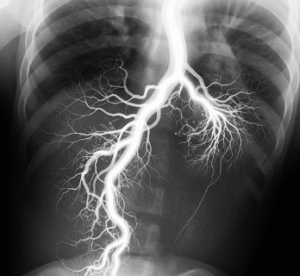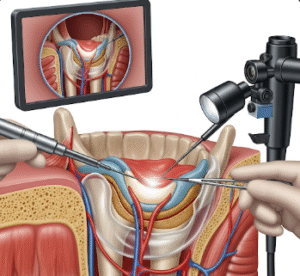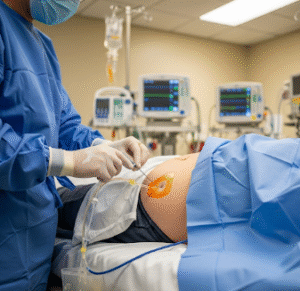What it is
A vaginal ring is a flexible, small, circular device inserted into the vagina to release hormones for contraception or hormone therapy.
➡ Key facts:
- ✔ Delivers estrogen and/or progestin continuously over several weeks
- ✔ Types include:
- Combined hormonal vaginal rings → Contraception
- Estrogen-only rings → Hormone replacement therapy for menopause
- ✔ Used by women seeking a convenient, reversible, and effective method of birth control
- ✔ Available in gynecology clinics, family planning centers, and hospitals across Korea
💡 Vaginal rings offer long-lasting hormone delivery with minimal daily effort, combining convenience and high contraceptive efficacy.
Why it’s done
The vaginal ring is used for:
➤ Contraception → Prevents ovulation and pregnancy
➤ Regulating menstrual cycles → Helps with irregular periods
➤ Managing menopausal symptoms → Hot flashes, vaginal dryness, and hormone deficiency
➤ Reducing menstrual cramps and bleeding → Provides hormonal balance
➤ Alternative to daily pills → Convenient monthly regimen
⚠ Vaginal rings are chosen for effectiveness, ease of use, and reversible hormone therapy.
Alternatives / Complementary Measures
Other hormonal or non-hormonal methods include:
✔ Combined oral contraceptives (pills) → Daily hormone intake
✔ Progestogen-only pill → Hormonal contraception without estrogen
✔ Contraceptive implants or injections → Long-acting reversible contraception
✔ Barrier methods → Condoms or diaphragms
✔ Intrauterine devices (IUDs) → Hormonal or non-hormonal long-term contraception
⚠ Choice depends on health status, convenience, and personal preference.
Preparation
Before using a vaginal ring in Korea:
🔹 Medical consultation → Assess health, pregnancy risk, and contraindications
🔹 Lifestyle and medical history review → Blood clots, liver disease, migraines
🔹 Instruction on insertion and removal → Demonstration by a healthcare provider
🔹 Timing → Start during menstruation or per physician’s advice
🔹 Follow-up plan → Schedule check-ups for side effect monitoring
💡 Korean gynecology clinics provide personalized counseling and practical guidance for correct and safe use.
How it’s done
➡ Step-by-step usage:
- Insertion → Patient compresses the ring and gently inserts it into the vagina
- Positioning → Ring rests comfortably; exact placement is flexible
- Duration → Typically 3 weeks in, 1 week out for menstruation; estrogen-only rings may vary
- Removal → Patient pulls the ring out at the end of use cycle
- Replacement → Insert new ring after a ring-free week or per prescribed schedule
💡 Vaginal rings are self-administered, painless, and reversible, offering monthly contraception without daily action.
Effectiveness & Success Rate
✔ Highly effective → Over 99% effective with proper use
✔ Minimal user error → Monthly schedule reduces forgetting compared to daily pills
✔ Regulates hormones → Helps with menstrual symptoms and cycle consistency
✔ Rapid return to fertility → Normal ovulation resumes shortly after discontinuation
💡 Korean clinics provide education on adherence and monitoring, ensuring maximum effectiveness.
Recovery / Expected Outcomes
✔ Immediate comfort → Most women adapt within a few days
✔ Symptom relief → Reduced menstrual cramps, regulated periods, and fewer menopausal symptoms
✔ No downtime → Normal daily activities continue without disruption
✔ Follow-up → Periodic check-ups for side effects, vaginal health, and overall well-being
💡 With correct use, the vaginal ring is safe, convenient, and effective.
Complications / Risks
⚠ Possible side effects include:
➡ Local reactions → Vaginal irritation, discharge, or discomfort
➡ Systemic effects → Nausea, headache, breast tenderness, or mood changes
➡ Serious but rare risks → Blood clots, stroke, or heart attack (more common in women with risk factors)
➡ Ring expulsion → Occasionally falls out; can be reinserted immediately
💡 Korean healthcare providers ensure proper patient selection, counseling, and monitoring to minimize complications.
Treatment Options in Korea (Post-Insertion Care)
🔹 Symptom management → Painkillers for cramps, advice for mild side effects
🔹 Vaginal health → Monitoring for infections or irritation
🔹 Adherence support → Reminders for insertion and removal schedule
🔹 Alternative options → If ring unsuitable, switch to pills, implants, or IUDs
🔹 Follow-up consultation → Assess hormone levels, side effects, and satisfaction
💡 Korea emphasizes personalized reproductive healthcare, ensuring safe and effective use of vaginal rings.
Top Hospitals & Clinics in Korea for Vaginal Ring
🏥 Seoul National University Hospital (SNUH) – Comprehensive family planning services
🏥 Asan Medical Center (Seoul) – Hormonal contraception and gynecological care
🏥 Samsung Medical Center (Seoul) – Education and follow-up for reproductive health
🏥 Yonsei Severance Hospital – Menopause and contraception management
🏥 Private gynecology clinics nationwide – Accessible counseling and prescription services
Conclusion
Vaginal rings in Korea provide a safe, convenient, and highly effective method of contraception and hormone therapy.
✔ Offers monthly hormone delivery with minimal daily effort
✔ Effective for preventing pregnancy, regulating periods, and managing menopausal symptoms
✔ Rapid return to fertility and reversible use
✔ Korean hospitals and clinics ensure proper guidance, monitoring, and follow-up care
By combining modern contraceptive technology, expert counseling, and structured follow-up, Korea ensures women maintain reproductive health, convenience, and safety.

